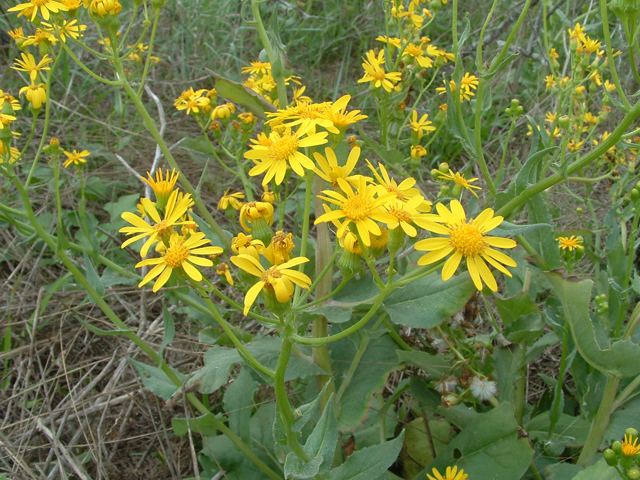Tribe Senecioneae Rank Species | Higher classification Ragworts | |
 | ||
Similar Ragworts, Daisy family, Senecio fremontii, Senecio chilensis, Senecio adenotrichius | ||
Senecio ampullaceus also known as Texas ragwort, Texas squaw-weed, Texas groundsel, and Texas butterweed is a species of Senecio in the family Asteraceae and gets its Latin name ampullaceus from its flask shaped flower-head and is a recommended native for landscape use in Texas where it came from.
Contents
Description
The seedlings of S. ampullaceus often have a purplish color on the undersides of their leaves in the winter, especially along their midrib. Flowering in early–mid spring, Texas ragwort is a tall annual, growing to from 20 centimeters (7.9 in) to 80 centimeters (31 in) tall and similar to S. quaylei.
Stems and leaves: The leaves with broadly winged leaf stalks, grow from single stems; the nodes between leaves getting shorter and shorter higher on the stem. Ovate leaves with pointed tips 3 centimeters (1.2 in) to 10 centimeters (3.9 in) long by 1.5 centimeters (0.59 in) to 4 centimeters (1.6 in) wide with tapered bases. Leaves at the lower portion of the plant have more teeth on their edges than the leaves at the upper portion of the mature plant.
Stems and leaves are covered loosely and unevenly with a mat of fine hairs, occasionally having no hairs.
Flowers: Flowering stalks have 10 to 30 flower heads which as a group make a flat top to the whole plant. Each flower head is surrounded by 2 to 8 bractlets or mini-leaves, each 1 millimeter (0.039 in) to more than 2 millimeters (0.079 in). Approximately 13 green to grayish bracts, 7 millimeters (0.28 in) to 10 millimeters (0.39 in) long surrounding 8 ray florets and an 8 millimeters (0.31 in) to 10 millimeters (0.39 in) corolla.
Fruits: One seeded fruits with rigid pappus.
Roots: Roots relatively thin and branching.
Distribution
S. ampullanceus prefers altitudes of 100 meters (330 ft) to 800 meters (2,600 ft) in open sandy or disturbed sites.
Native:
Nearctic:North-central United States: MissouriSoutheastern United States: ArkansasSouth-central United States: Texasor
Current:
Nearctic:North-central United States: Missouri, OklahomaSoutheastern United States: ArkansasSouth-central United States: Texas